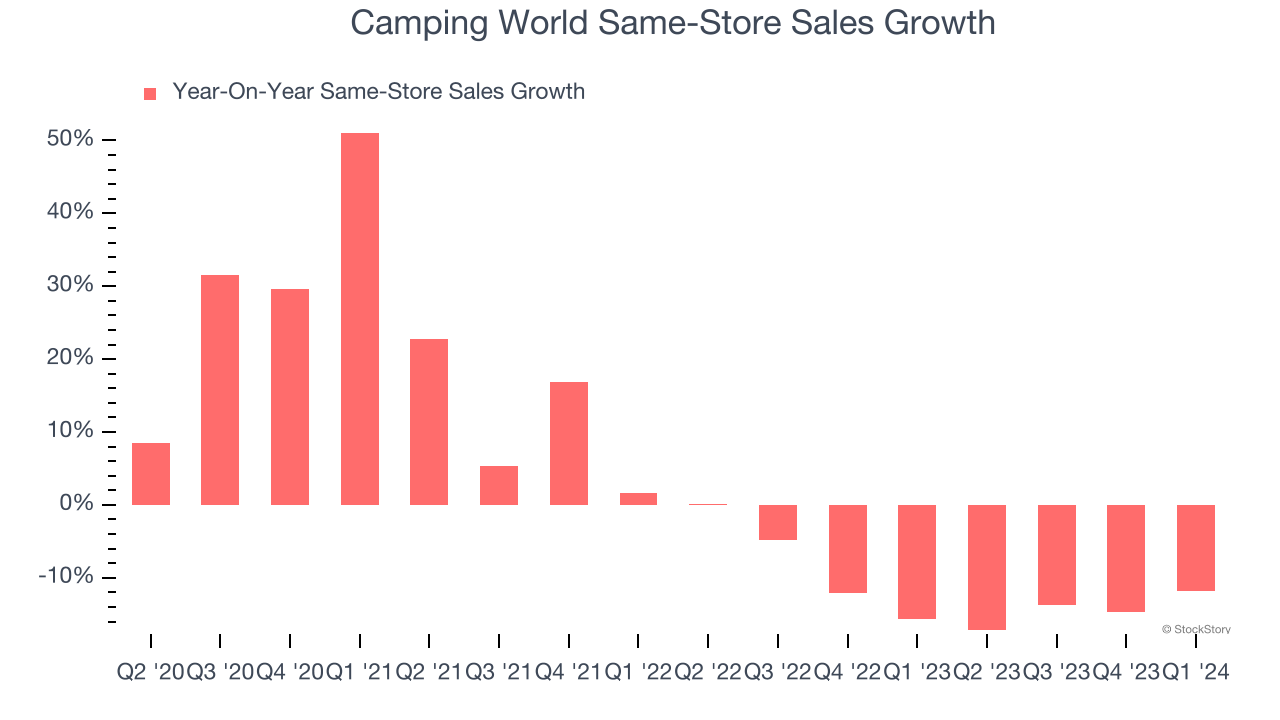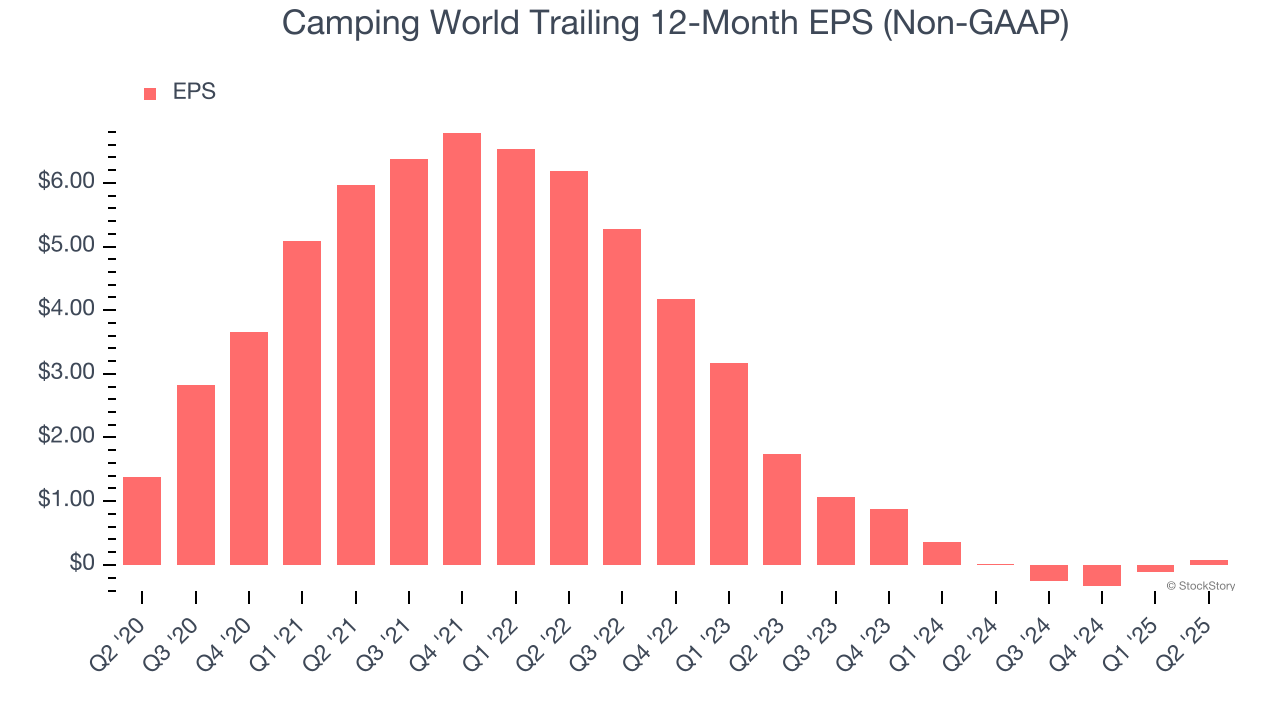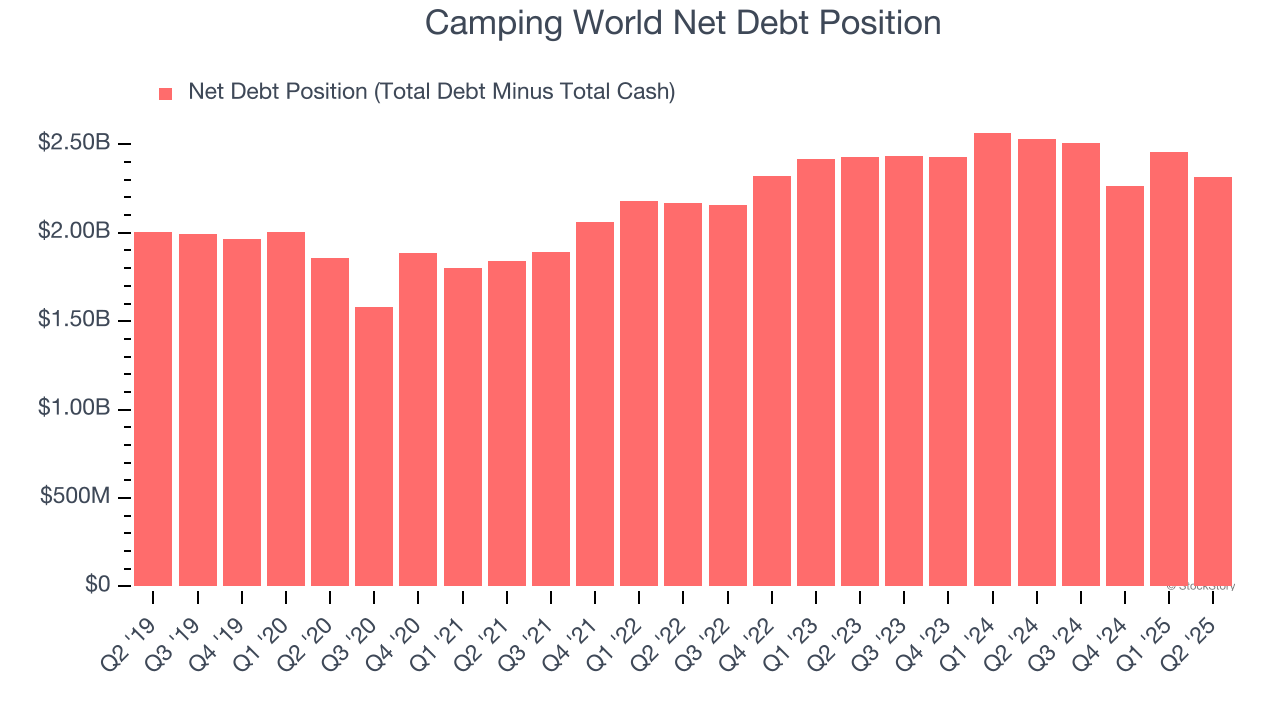
Over the past six months, Camping World’s shares (currently trading at $16.89) have posted a disappointing 19% loss, well below the S&P 500’s 6.4% gain. This might have investors contemplating their next move.
Is there a buying opportunity in Camping World, or does it present a risk to your portfolio? See what our analysts have to say in our full research report, it’s free.
Why Is Camping World Not Exciting?
Even though the stock has become cheaper, we're swiping left on Camping World for now. Here are three reasons why we avoid CWH and a stock we'd rather own.
1. Shrinking Same-Store Sales Indicate Waning Demand
Same-store sales is a key performance indicator used to measure organic growth at brick-and-mortar shops for at least a year.
Camping World’s demand has been shrinking over the last two years as its same-store sales have averaged 13.4% annual declines.
Note that Camping World reports its same-store sales intermittently, so some data points are missing in the chart below.

2. EPS Trending Down
Analyzing the long-term change in earnings per share (EPS) shows whether a company's incremental sales were profitable – for example, revenue could be inflated through excessive spending on advertising and promotions.
Camping World’s full-year EPS dropped significantly over the last five years. In a mature sector such as consumer retail, we tend to steer our readers away from companies with falling EPS because it could imply changing secular trends and preferences. If the tide turns unexpectedly, Camping World’s low margin of safety could leave its stock price susceptible to large downswings.

3. High Debt Levels Increase Risk
Debt is a tool that can boost company returns but presents risks if used irresponsibly. As long-term investors, we aim to avoid companies taking excessive advantage of this instrument because it could lead to insolvency.
Camping World’s $2.43 billion of debt exceeds the $118.1 million of cash on its balance sheet. Furthermore, its 8× net-debt-to-EBITDA ratio (based on its EBITDA of $304.5 million over the last 12 months) shows the company is overleveraged.

At this level of debt, incremental borrowing becomes increasingly expensive and credit agencies could downgrade the company’s rating if profitability falls. Camping World could also be backed into a corner if the market turns unexpectedly – a situation we seek to avoid as investors in high-quality companies.
We hope Camping World can improve its balance sheet and remain cautious until it increases its profitability or pays down its debt.
Final Judgment
Camping World isn’t a terrible business, but it isn’t one of our picks. Following the recent decline, the stock trades at 17.1× forward P/E (or $16.89 per share). This valuation tells us a lot of optimism is priced in - we think there are better stocks to buy right now. Let us point you toward the Amazon and PayPal of Latin America.
High-Quality Stocks for All Market Conditions
Donald Trump’s April 2025 "Liberation Day" tariffs sent markets into a tailspin, but stocks have since rebounded strongly, proving that knee-jerk reactions often create the best buying opportunities.
The smart money is already positioning for the next leg up. Don’t miss out on the recovery - check out our Top 5 Strong Momentum Stocks for this week. This is a curated list of our High Quality stocks that have generated a market-beating return of 183% over the last five years (as of March 31st 2025).
Stocks that made our list in 2020 include now familiar names such as Nvidia (+1,545% between March 2020 and March 2025) as well as under-the-radar businesses like the once-small-cap company Exlservice (+354% five-year return). Find your next big winner with StockStory today.
StockStory is growing and hiring equity analyst and marketing roles. Are you a 0 to 1 builder passionate about the markets and AI? See the open roles here.





